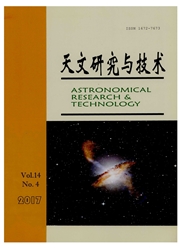

 中文摘要:
中文摘要:
随着大规模光谱巡天项目的规划、实施和运行,从庞大数量的天体光谱中自动分析、高效挖掘和快速提取信息,获取天体的有效物理参量,是天文学者关注的焦点和当代天文研究的重要课题。大部分天文学研究工作基于光谱分析开展,各种迅速发展的光谱分析工具的便捷性和易用性对于探究天文光谱的特征具有重要的促进意义。针对国内外目前已经完成、正在运行和即将开展的大型光谱巡天项目,描述了一些巡天项目并指出了运用光谱分析工具的重要意义。以7种常用光谱分析软件VOSpec、VOSED、Spec View、Iris、SPLAT、CASSIS、ASERA为例,介绍了光谱分析软件的基本特点和主要功能,同时比较了这些软件应用环境的异同,为天文学家选择和运用光谱分析工具提供一定的指导和参考。
 英文摘要:
英文摘要:
With the planning, implementation and operation of large-scale spectroscopic survey projects, automatic analyses, efficiently collections and quickly extracting effective physical information from the huge volume of astronomical spectral data is the focus of astronomers and an important issue of contemporary astronomical researches. Most of astronomy researches are based on the spectral analysis. Various rapidly developed spectral analysis tools are of promoting significance to easily explore the spectral characteristics in view of their convenience and usability. In this paper, the relevant background of the several completed, running and upcoming spectroscopic survey projects are described, and the importance of applying spectral tools is pointed out. Taking VOSpec, VOSED, SpecView, Iris, SPLAT, CASSIS, ASERA for example, the basic features and main functions of theos spectral analysis tools are introduced, and then the applications and operating environments of these tools are compared, The research in this paper provides the certain reference and guidance for astronomers to select the analysis software.
 同期刊论文项目
同期刊论文项目
 同项目期刊论文
同项目期刊论文
 Quiescent Luminous Red Galaxies (LRGs) as CosmicChronometers: on the Significance of the Mass and En
Quiescent Luminous Red Galaxies (LRGs) as CosmicChronometers: on the Significance of the Mass and En 期刊信息
期刊信息
